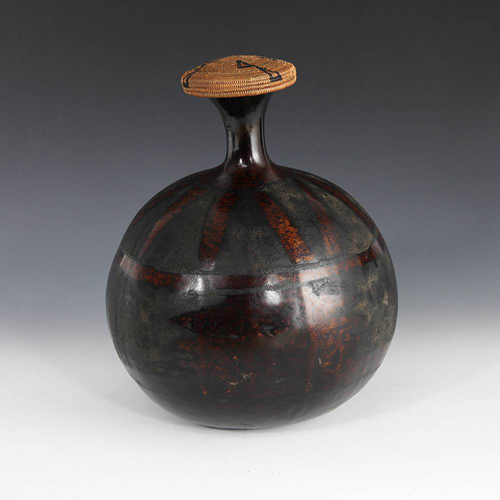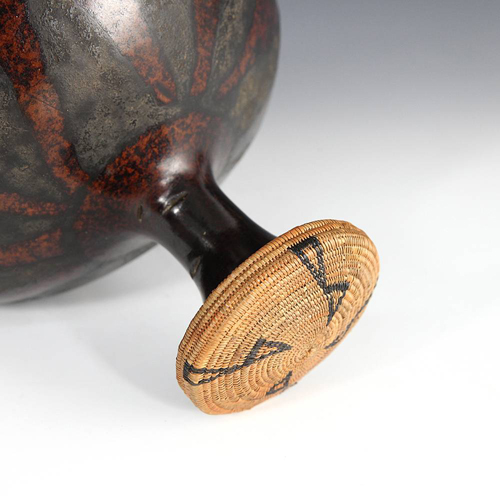Tutsi Ceremonial Calabash
Wine anyone?
 |
|
| Ceremonial Calabash with Woven Lid; Tutsi people; Rwanda, Central Africa; 20th C.; 7 DIA x 9 H inches; I.D. #A1700-047 |
Can you name the oldest known cultivated plant? Here are some clues: it is also called the Suzza melon, Opo squash, and the Tasmania or New Guinea bean. It’s scientifically called Lagenaria siceraria, or alternatively Lagenaria vulgaris. One name sounds like a solo from an Italian opera; the other like the scientific label for pornography. Names aside, it has multiple uses. As food, it is an exceptional source of fiber, has tasty seeds and can be eaten raw or cooked. It is also functional and has many uses beyond nutrition. In the Caribbean it is worked and used as a bong to dispense good moods. In China, it dispenses different medicine; and in India it becomes multiple musical instruments. In Africa this plant can be found in most households where it is transformed into a wide variety of utensils. Go to Rwanda, and it has been elevated to super-high status as this week’s New Arrival. Can you name it now?
 |
|
| Detail of calabash with fitted lid woven by the Tutsi, who are famous for their basket weaving; see related blog to learn more | |
This week’s New Arrival features a ceremonial calabash with a woven cap. The calabash is also called the bottle gourd, and in addition to other names it is also the oldest known cultivated plant. Although technically a vegetable, it can be used to trace human migration because it has been carried to just about every part of the world by people using it like a bottle. This piece was crafted by the Tutsi people of Rwanda. More a social class than a tribal group, the Tutsi have been called an aristocracy composed of landowners, military leaders, chiefs and priests. Being Tutsi means you’re at the top of the social heap with all the fitting accouterments, including decorated gourds meant to hold palm wine. You can appreciate this piece by thinking Chateau Mouton-Rothschild 1945 with the emphasis on the bottle rather than the wine. Like its western counterpart, it had a reputation and real as well as symbolic value.